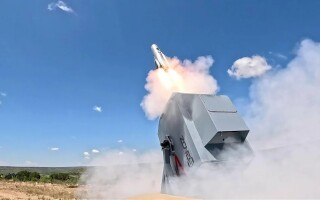Covering standards
StoryOctober 17, 2022

“Is it difficult covering standards, is it getting slow?” my dinner companion asked on the eve of the AUSA 2022 Annual Meeting in Washington. He noted how technical standards bodies can be plodding, taking months to deliberate on a specific point without creating much news.
While it’s true standards organizations are not exactly fountains of breaking news, I told him, the efforts of groups like the Sensor Open Systems Architecture (SOSA) Consortium, the Future Airborne Capability Environment (FACE), and the VITA Standards Organization (VSO) do generate lots of content on the design process of hardware and software solutions for the defense technology community.
In recent times, such efforts – especially since the U.S. Department of Defense (DoD) mandate to leverage modular Open Systems Approach (MOSA) strategies in new platforms and upgrades – are generating tons of technical editorial content for the pages of this journal, as well as for our SOSA Special Edition, FACE Special Edition, and VITA Technologies magazine.
This has been especially true with articles covering the SOSA Technical Standard, as it is impacting many DoD applications such as radar, electronic warfare (EW), intelligent systems, and other mission-compute applications. In fact, this issue features SOSA cofounder C. Patrick Collier sharing a byline with Denis Smetana of Curtiss-Wright in an article titled “Multi-INT and SOSA: A consideration of next steps.”
One point from their article: “With MOSA in mind, from the technical and business acquisition perspective, and SOSA as an enabler of MOSA for something like Multi-INT [multi-intelligence], we see that the SOSA Reference Architecture (RA) is fundamentally well positioned to help realize the potential of Multi-INT applications.”
Also in this issue: Travis Doll of Sciens and John Orlando of Epiq Solutions collaborated on a feature titled “SOSA’s rubber is meeting the road in rapid system development,” highlighting how SOSA affects software-defined radio (SDR) designs.
“Of the many steps to test and validate interoperability in a SOSA aligned system, the point at which system designers start thinking about how they will command and control a device from the outside world makes up a crucial piece of the puzzle,” they write. “This integration requires implementing various MORA [Modular Open Radio Frequency Architecture] and Vehicular Integration for C4ISR/EW Interoperability (VICTORY) interfaces that enable other components to discover the hardware and ‘talk’ to it for command and control, data ingest and egress, health and status, and then determine its capabilities.”
MORA and CMOSS … yes, two more standards; it seems that each standard begets more content on other related standards.
In a way, it’s a content gift that keeps on giving, is how I put it to my friend at dinner. Full disclosure: The standard we were discussing was SOSA, and some may feel SOSA chatter has slowed since the release of the Reference Architecture 1.0 a year ago.
In fact, the SOSA content engine has not slowed, even though the news feed might seem to have stalled, at least until this week at AUSA. At the show, SOSA outreach leaders did make some news around upcoming SOSA document releases.
Valerie Andrew, of Elma Electronic and co-chair of the SOSA Outreach Committee, announced during a public briefing that the SOSA Technical Reference Standard Edition 2.0 Snapshot is expected out in the first quarter of 2023, while the Reference Implementation Guide and the Acquisitions & Contracting Guides are nearly finished and should be published soon.
Perhaps of most interest to all SOSA members: The first rollout of the SOSA Conformance Guide is expected to be published in February of 2023. It will establish equipment requirements and guidelines for Verification Authorities. Andrew added that the consortium is working to ensure the conformance process will not be too overarching and expensive.
During the briefing, FACE Consortium Director Alicia Taylor also spoke and mentioned that FACE is reviewing its own more mature conformance process to see where efficiencies can be added.
That makes me think of yet another reason standards keep delivering content: Regular revisions and updates. Yet perhaps the biggest driver of said content is the enthusiasm for the standard from those involved in the process.
SOSA has that enthusiasm. “While every community within SOSA has its own perspective – whether government, COTS [commercial off-the-shelf] suppliers, system integrators, or academia – the SOSA Consortium model enables all of those perspectives to come together in one room where all the different communities can listen and interact with each other,” Collier and Smetana note.
As Ilya Lipkin, technical lead for SOSA, has told me, standards processes depend heavily on the enthusiasm and involvement of the volunteers. It’s tough to put a metric on enthusiasm, but all the content we keep publishing and you keep reading is a good place to start.






